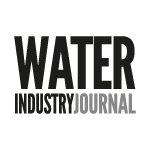By Mike Williamson, Managing Director, Water Services, Adler & Allan
Despite increased investments and regulations, the UK’s ageing wastewater infrastructure faces challenges from climate change and population growth. While proactive sewer rehabilitation helps maintain parts of the network, factors such as misconnections and infiltration continue to drive pollution and flooding events. Unlocking hidden hydraulic capacity through targeted interventions infiltration reduction, blockage removal, and misconnection management, water companies can enhance flow efficiency, reduce pollution events, and prevent flooding without the need for new infrastructure. Advanced monitoring, predictive analytics, and better data can improve efficiency, meet regulatory targets, and guide future investments. By optimising existing assets rather than expanding, water companies can enhance resilience, reduce costs, and support sustainability while adapting to increasing environmental and population pressures.
The challenge: managing an increasingly overburdened network
Water companies face ongoing challenges with flooding and pollution, particularly during heavy rainfall. Excess surface water overwhelms systems, causing spills. However, infiltration, misconnections, and blockages reduce hydraulic capacity and are difficult to detect. These issues impact performance, cause environmental harm, and result in regulatory non-compliance.
As we enter AMP8, financial penalties for underperformance are growing, and the pressure to deliver measurable improvements has never been greater. Water companies must take a strategic and data-driven approach to ensure assets are operating at their intended capacity. Investing in smart monitoring solutions, predictive analytics, and targeted intervention strategies will be key to identifying issues early and preventing costly pollution events.
Infiltration: groundwater strain
Groundwater infiltrating ageing sewer pipes increases treatment costs, reduces capacity, and raises pollution risks. Infiltration can be particularly problematic in areas with high groundwater levels, where sustained infiltration can lead to chronic performance issues and increased pollution risks.
The solution:
- Monitoring hotspots and analysing flow data.
- Sealing pipes to prevent groundwater entry and extend asset life using cost-effective technology.
- Proactive maintenance strategies to address minor defects early.
Addressing infiltration improves system efficiency and frees up capacity without major infrastructure investments. A targeted, data-led approach enhances benefits while supporting compliance with regulatory standards.
Misconnections: improper links
Misconnections occur when wastewater or surface water enters the wrong sewer, reducing system performance and causing pollution. Misconnections are often undetected due to their occurrence in private properties or outdated drainage systems. Left unresolved, they can significantly impact network performance and compliance with environmental regulations.
Types of misconnections:
- Foul water entering storm drains.
- Permitted stormwater into combined sewers.
- Not permitted stormwater into foul sewer networks.
This leads to rainwater overloading foul sewers or untreated foul water flowing into rivers, causing inefficiency and pollution.
The solution:
- Advanced monitoring and surveys.
- Targeted investigations in high-risk areas.
- Collaboration with property owners to fix misconnections.
- Public awareness campaigns on misconnections’ impact.
Preventing rainwater from entering the sewage system increases capacity, enhances treatment efficiency, and reduces pollution. Addressing foul drain misconnections eliminates hidden pollution sources detectable through investigation. Proactive misconnection management helps utilities meet performance targets, comply with regulations, and improve environmental outcomes.
Blockages: hidden threats
Blockages from debris like silt and fats often occur in syphons and/or trunk sewers, restricting flow and risking spills. Syphons and trunk sewers both require proper maintenance as debris can quickly reduce hydraulic capacity.
The solution:
- Regular risk-based cleaning of syphons and trunk sewers to restore capacity.
- Monitoring sediment buildup and predicting cleaning needs.
- Proactive maintenance prioritising high-risk assets.
- Improved mapping for accurate syphon maintenance.
A well-maintained sewer system not only ensures compliance with environmental regulations but also enhances long-term operational efficiency, reducing costs and improving service reliability.
A smarter way forward: a holistic approach
Rather than relying solely on increasing storage or adding storm overflows, optimising existing assets provides a sustainable, cost-effective approach to pollution reduction. By tackling infiltration, misconnections, and blockages head-on, water companies can unlock hidden capacity, improve compliance, and protect the environment, all without costly infrastructure expansion.
Each catchment presents unique challenges; some may experience higher levels of infiltration, others more misconnections, while urban areas may struggle with blockages from fatbergs. A holistic, tailored approach is essential, as a single solution will not work for all areas.
Investing in proactive asset management not only enhances network performance but also helps future-proof wastewater infrastructure against increasing regulatory pressures, climate change, and population growth. A smarter, data-driven approach to wastewater management is essential for ensuring long-term resilience and sustainability.
By leveraging advanced monitoring technologies, data-driven decision making, and targeted intervention strategies, water companies can achieve greater operational efficiency while meeting stringent regulatory requirements.




